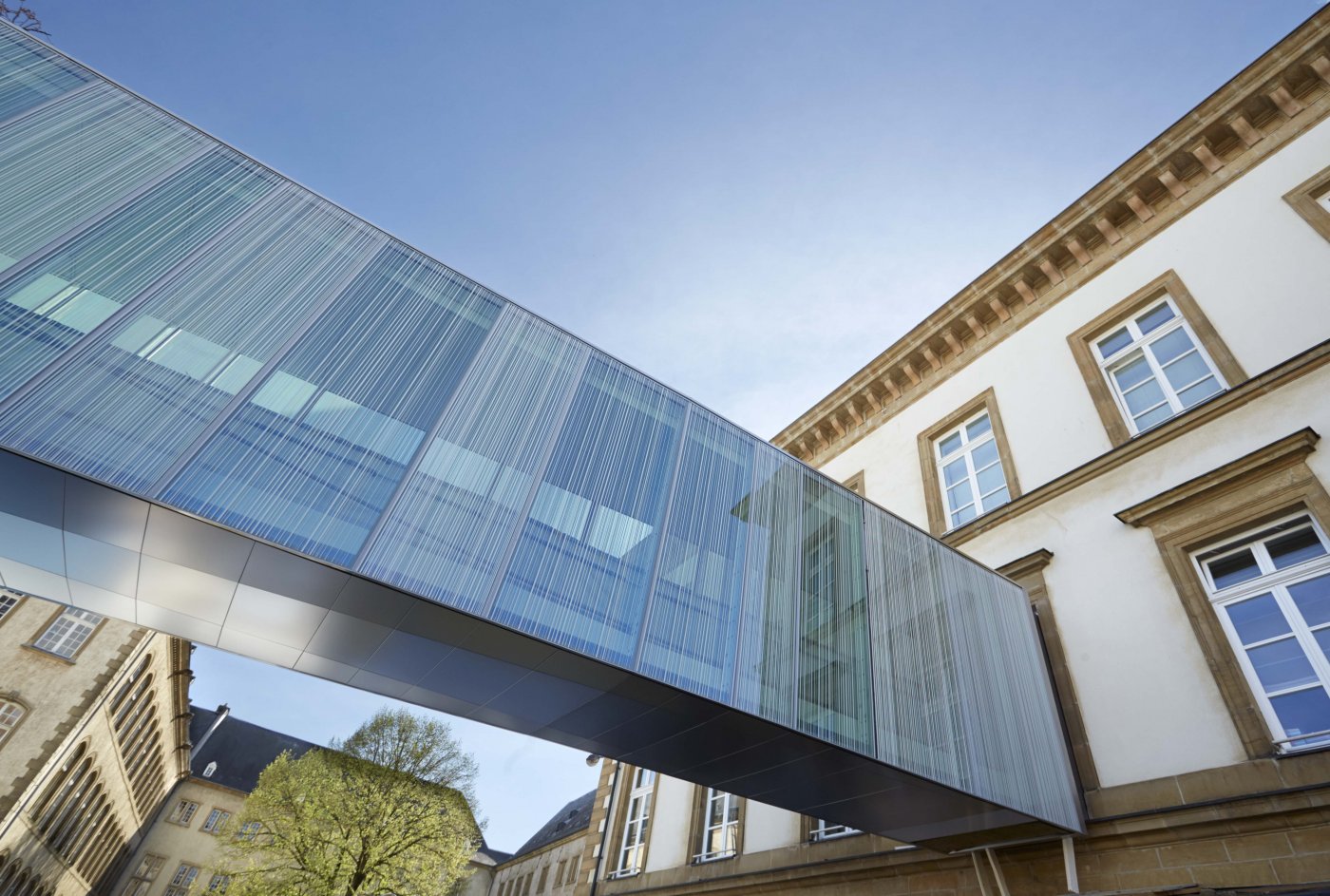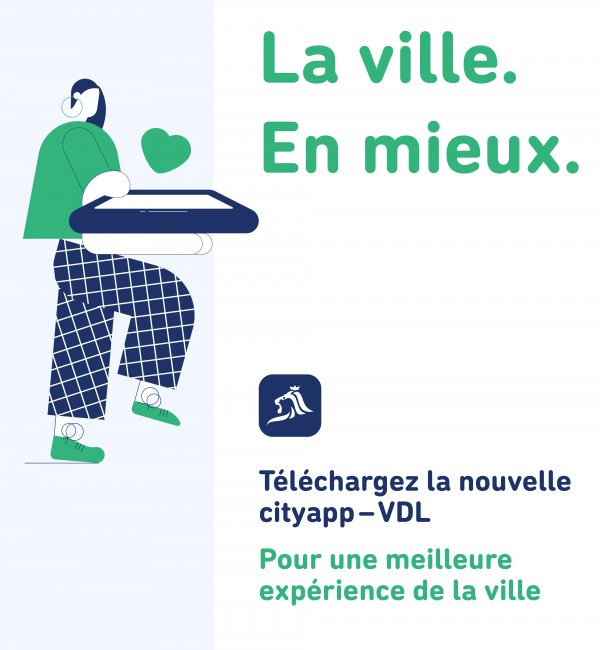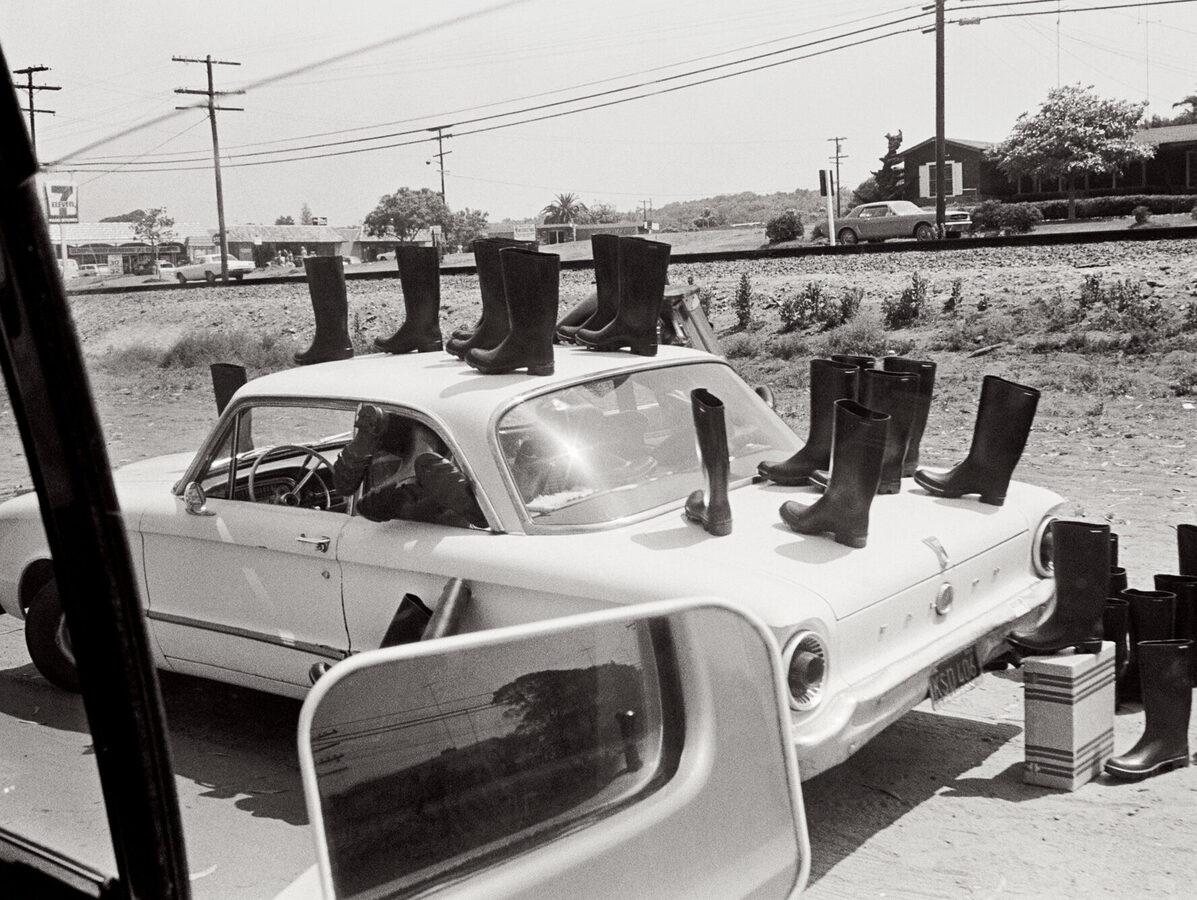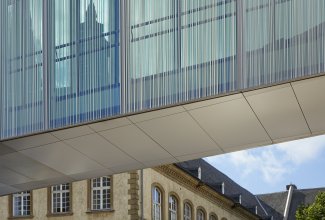Summary record
Video
Fire in Rousegäertchen car park
Question by Tom Krieps
I would like to put an urgent question to you regarding the fire in Rousegäertchen car park, the cause of which is still unknown. I am curious about the safety systems installed in the car park.
Unless I am mistaken, the car park does not have a sprinkler system. This type of system can contain the fire to the burning vehicle, or at least stop it from spreading beyond neighbouring vehicles. I will not dwell on the fact that the fire lasted for some time and could have caused structural damage to the building,
or that a gas venting system could have prevented any danger and risk to human health. My questions, which I believe are urgent, are:
- Did Rousegäertchen car park have a sprinkler system and/or emergency gas venting system?
- If not, would it not be advisable to install such a system, whether or not it is compulsory?
- Should it fall to the owner or operator of the car park to install this type of system?
- What is the situation in other city-owned underground car parks in our capital?
Response by Lydie Polfer
The mayor replied that only level -3 of Rousegäertchen car park was fitted with an automatic sprinkler system, not levels -1 and -2. This setup was in line with the building permit issued in 1984. In addition, an emergency gas venting system was in place on each level of the car park.
Under current regulations, an automatic sprinkler system is compulsory on all levels, and it was the operator's responsibility to install this system.
Following a call for tenders, the car park had been built by Lux-TP with an operating licence dating from 9 July 1980, approved by the municipal council on 14 July 1980. This licence expired in 2012, when the car park became city property. Following another call for tender, the company Parking des Martyrs SA, since renamed Lithopark SA, was chosen to operate it. From a legal standpoint, however, the situation is clear, since it was the operator's responsibility to install a sprinkler system.
All other municipal car parks were fitted with this type of system, although not always on every level. For example:
- Knuedler car park has one on levels -3, -2 and -1, but not on the ground floor near the entrance and exit.
- In the Place du Théâtre car park, a sprinkler system has only been installed on levels -3, -4 and -5, but not on levels -1 and -2.
- All other municipal car parks have a sprinkler system on every level. These were built more recently, in particular the Rue du Fort Wedell, Monterey, Rocade, Piscine de Bonnevoie, Tramsschapp and Schuman car parks.
- No sprinkler system has been installed in the Bouillon and Stade car parks, since it is only compulsory for underground car parks.
The college of aldermen has no immediate plans to reopen Rousegäertchen car park. Instead, the car park will be fully refurbished to bring it into line with current safety standards, once its structural stability has been established and following the recommendations and guidelines of the Inspectorate of Labour and Mines (Inspection du travail et des mines).
Fault at the Beggen water treatment plant
Question by Linda Gaasch
According to media reports, the Alzette was contaminated following a fault at the Beggen treatment plant which occurred overnight between Friday 13 and Saturday 14 September.
The resulting uncontrolled discharge of untreated water from the Beggen treatment plant into the Alzette had a devastating impact on the environment and aquatic life, killing hundreds of fish. As such, I would like to put the following questions to the college of aldermen:
- What exactly happened?
- Was the problem at the Beggen treatment plant due to technical or human error, or both?
- For how long did untreated water continue to flow into the Alzette? When exactly was the problem first spotted?
- What was the response to the fault, and how long did it take to react? What was the contingency plan, and how was it implemented?
- How much untreated water was discharged into the Alzette? What was the environmental impact? How were ecosystems affected? What was the impact on aquatic life?
- What measures will be put in place to remedy the contamination of the Alzette?
- How long will it be before these measures take effect? What is the estimated cost of these measures?
- Have other municipalities been affected by this pollution? If necessary, how can municipal authorities work together to decontaminate the water and restore ecosystems?
- What lessons can be drawn from these events?
- Is there a risk that this fault could occur elsewhere? What plans does the college of aldermen have to address this?
Response by Simone Beissel
Alderwoman Simone Beissel made the general comment that it should first be made clear that the facilities of the Beggen treatment plant date to 2011. Its maximum capacity is suitable for a population of 210,000. Its operation is fully automated, which means that a permanent staff presence is not essential. Until now, staff presence had been provided by shifts outside of normal working hours from Monday to Friday. In the event of a malfunction, managers were automatically alerted by text message or email.
The plant is also equipped with a bypass or, in technical jargon, a control valve which was fitted to allow untreated water to flow directly into the Alzette in the event of severe flooding. For two years, this remained permanently closed and had not been used at all.
During the evening of Friday 13 September, the control unit reported an operating system malfunction. Engineers and electricians were immediately dispatched to the site, and it had looked as though they had managed to fix the problem. However, around 23:00, the IT system inexplicably opened the valve. At that moment, water that had been pre-treated in the filter system and in the silt and grease trap flowed into the Alzette. Rather than undergoing the usual biological treatment, the pre-treated water instead flowed through the open valve and into the Alzette.
At around 18:45 on Saturday 14 September, pollution was observed downstream of the plant. The valve was immediately closed again at 19:06, and subsequently remained closed. This was solely due to a technical error.
The investigation continued through the night to pinpoint the exact cause of the IT system malfunction.
An estimated 19,850 m³ of contaminated water was discharged into the Alzette. Hundreds of fish were killed, not by chemical pollution, but by oxygen deprivation due to the excessive pollutant content in the water.
The City immediately contacted the Water Management Authority (Administration de la gestion de l'eau). Following this consultation, the City commissioned a study by an external consultancy firm to examine the impact of the pollution on the aquatic flora and fauna and formulate proposals on how to mitigate the damage. Unfortunately, the pollutant content was rather high, exacerbated by the fact that the water levels of the Alzette had dropped over the summer. Pollution was recorded as far away as Mersch, with the municipalities of Walferdange, Steinsel, Lintgen and Lorentzweiler also affected. All were contacted immediately so that joint emergency measures could be taken.
For the time being, however, the Water Management Authority has been unable to give a full picture of the damage.
The City plans to install a separate control system, independent from the central IT system. This would sound an alarm as soon as any untreated water flows into the Alzette, preventing significant spills in the future. In addition, staff will be present on site at weekends to monitor the plant. The operating system will also be checked at weekends and the remote alarm system will be tested and enhanced.
Lastly, once the report is ready, it will be sent to the Water Management Authority and to the Ministry of the Environment, Climate and Sustainable Development (Ministère de l’Environnement, du Climat et du Développement durable).
Closure of the post office in Bonnevoie
Question by David Wagner
On 12 September, the POST group issued a press release announcing that the post office in Bonnevoie was to close on 30 September.
The city's largest district is therefore losing its only post office. Customers are being asked instead to use the post office counter in the Cactus supermarket for their everyday postal needs. For financial transactions, they will have to go to the main post office in the Gare district.
This is a result of the POST group continuing to privatise its services and scaling back the service it provides to the public. Elderly people who are unfamiliar with ATMs and electronic services will be especially hard hit by this measure.
I would therefore like to put the following urgent question to the college of the mayor and aldermen:
- Was the college informed of this closure in advance?
- What was their response?
- What measures are envisaged?
Response by Lydie Polfer
The mayor confirmed that the City had spoken to the management of POST Luxembourg ahead of the public announcement of the decision to close the Bonnevoie post office. Following the rumours that had begun to circulate some time before, the college of aldermen had sent a letter dated 6 December 2017 to the management objecting to the closure, arguing that the city's largest district should have a post office.
Among other things, the letter mentioned that "if such a closure were indeed being planned by the company, the college of aldermen wished to draw its attention to the importance of the city's largest district – a predominantly residential area – continuing to have a post office offering the usual services". Unfortunately, the management of POST Luxembourg has remained resolute, although the college of aldermen is still of the view that Bonnevoie should keep its post office.
The college of aldermen could write to the management again to reiterate its objection to the closure, if members of the public were to contact it and express how unhappy they were with the replacement services offered by POST Luxembourg.
Dogs in Luxembourg City
Question by Tom Krieps
I would like to ask you a question in accordance with our internal rules and regulations.
The groups of homeless people found in different parts of the city are often accompanied by dogs.
Apart from the terrible state that these animals are often in, the fact remains that the law imposes various obligations on dog owners, such as rabies vaccinations and insurance.
- Does the City routinely check whether dogs owned by residents and in particular by its homeless population comply with these requirements?
- What measures is the City taking to enforce the 2008 Dogs Act (loi de 2008 sur les chiens)?
Response by Patrick Goldschmidt
Alderman Goldschmidt replied that under the amended Dogs Act of 9 May 2008 (loi modifiée du 9 mai 2008 sur les chiens), all owners were required to register their dog with their local municipal office. As part of this process, various documents have to be produced and in return a receipt is issued certifying that everything is in order. All dog owners had to be able to produce this receipt when asked. Nevertheless, in many cases, dog owners in the city are not officially resident either here or anywhere else in the country. Therefore, the city authorities are unable to check whether the dogs have been vaccinated or whether their owners have insurance, since this power is not available to municipal authorities under the law.
If the city's residents come across dogs that could potentially cause problems, under the Dogs Act, they can report the situation to their local municipal office. The mayor will then refer the matter to the Administration of Veterinary Services (Administration des Services vétérinaires), which will look into it.
In the interest of thoroughness, it was pointed out that under Articles 22 and 23 of the Dogs Act, the only people authorised to report infringements of the Act are vets from the Administration of Veterinary Services, officers from the judicial police, officers from the Grand Ducal Police, officials from the Customs and Excise Agency (Administration des douanes et accises) and officials from the Nature and Forest Agency (Administration de la nature et des forêts). The City therefore lacks the necessary legal means of enforcing the legislation on dogs.
Sponsoring the city's trees
Question by François Benoy
Luxembourg City has around 20,000 trees, many of them on the roadside. Trees produce oxygen, filter out airborne pollutants and are home to a variety of animal species. They therefore play a very important role. However, factors such as lack of space, soil compaction, litter, bikes being chained to them and dog fouling means that the base of the tree trunk is often in poor condition.
To improve the conditions for trees, increase biodiversity, enhance the urban environment and encourage local residents to get involved, many places (such as Dudelange, Differdange, Bettembourg, Basel, Cologne, Nuremberg, etc.) are giving people the opportunity to sponsor a tree. In the same vein, the City is calling on members of the public to sponsor a tree. This would involve planting the tree, tending it and, if necessary, watering it. The City is contributing to the scheme by marking out and enclosing planting sites, and offering guidance. In some locations, it even hands out seeds and vouchers.
Therefore, I would like to put the following questions to the college of the mayor and aldermen:
- Could the City envisage introducing tree sponsorship schemes in which members of the public would plant, tend and if necessary water the city's trees, while the City would mark out and enclose the planting sites and offer guidance? If so, when might this plan be put in place?
- Is the City taking or planning any other action to look after its trees?
Response by Serge Wilmes
Alderman Wilmes promised that the college was doing everything possible to look after and protect the city's tree population. The city has around 20,000 to 21,000 trees, and this number is steadily rising. It is also the only municipality in the country to have a tree register documenting each tree and its condition, which is extremely useful. Any suggestions on how to improve the trees' condition would, of course, be welcome.
In addition, the Service Parcs (Parks Department) has more than 200 employees and is doing an excellent job, but could not provide any absolute guarantees. It is working in conjunction with the Service Voirie (Roads Department): the Service Parcs keeps the crowns of the trees in good condition, while the Service Voirie is responsible for the base.
The college of aldermen therefore welcomes the idea of tree sponsorship and of getting the public more involved in tree maintenance in general. Accordingly, the college of aldermen has instructed the Service Parcs to develop a pilot project. This initiative could be used in tandem with the idea of setting up a parks council, proposed by the socialists in conjunction with the land restoration project in the Pétrusse Valley. (1a/2019/5-5)
Waste in Luxembourg City
Question from Elisabeth Margue
I am following up on the debate on the 2017 environmental report and 2018 environmental action plan (rapport environnemental 2017 et plan d'action environnemental 2018 ), held during the session on 11 March and focusing on waste management in Luxembourg City.
During the debate, Alderman Patrick Goldschmidt raised the idea of a pilot project providing selective recycling bins in public places for people to recycle their waste. The project echoed what had been proposed in the college of aldermen's mission statement – namely, the installation of recycling bins on a trial basis in specific locations.
According to the statement, there are still plans to introduce mini-recycling centres with monitoring in different districts.
I would therefore like to put the following questions to the college of aldermen:
- Can the college of aldermen give the municipal council more information about the types of locations that will be chosen, the types of waste targeted and the current status of the pilot project?
- Does the college of aldermen intend to replace existing containers with underground containers where possible?
- Would it be possible to provide selective recycling bins at major events due to be held in Luxembourg City over the coming months, such as the ING Night Marathon and the Schueberfouer?
- What is the status of the plan to set up mini-recycling centres?
Response by Patrick Goldschmidt
Alderman Goldschmidt replied that during the debate on the 2017 environmental report and 2018 environmental action plan, the college of aldermen announced an additional waste management effort and therefore instructed the Service Hygiène (Sanitation Department) to develop a pilot project to be implemented in two separate locations, first at the Kinnekswiss and then on the Geesseknäppchen campus. Implementing the pilot project was more complicated than expected. For example, students on the Geesseknäppchen campus often ate takeaway meals, whose packaging is not easily recyclable.
The City will therefore initially provide the campus with bins to recycle plastic and cans. It will also install bins at the Kinnekswiss and monitor their use, given that, throughout the year, there are a large number of passers-by – many of them young people who, in theory, would be more likely to recycle their waste using public bins.
As for the installation of underground containers, particularly near recreational areas, these are not suitable for all locations. First, the presence of a building site nearby risks preventing access. Second, they also have a limited or invariable volume, unlike containers above ground. As a result, it would not be possible to install them everywhere overnight. However, they could conceivably be introduced as part of future development plans or new residential developments in the city, not only for recyclable waste, but possibly also for residual waste. The City will endeavour to launch a pilot project, perhaps next year, along the lines of the "polluter pays" principle.
On the subject of selective waste sorting during major events, it would depend on whether the users were end consumers, operators, organisers or fairground personnel. In general, the City is in favour of a zero-waste approach. For events organised in the city by non-profit organisations, the City will provide mobile dishwashers ("Spullweenecher") to discourage the use of plastic or cardboard plates and cutlery.
Some questions remain regarding the operation of the "Spullweenecher" and providing cutlery, etc. Events that could potentially take advantage of the scheme on a trial basis are in the process of being selected. Operating regulations are also being drawn up.
Lastly, the City has identified 65 locations for containers. These are not recycling centres, but still allow a significant proportion of waste to be recycled, without residents having to go to the recycling centre on Route d'Arlon. In addition, the college of aldermen plans to set up mini-recycling centres, although once again, the right locations would have to be found and this project risks inconveniencing local residents.
In any case, a project is in the pipeline and once the relevant departments are ready, the college of aldermen will refer it to the municipal council. To conclude, it is important to note that recycling is a vast and complex subject, and that a more detailed written response will be distributed to all parties represented on the municipal council.












